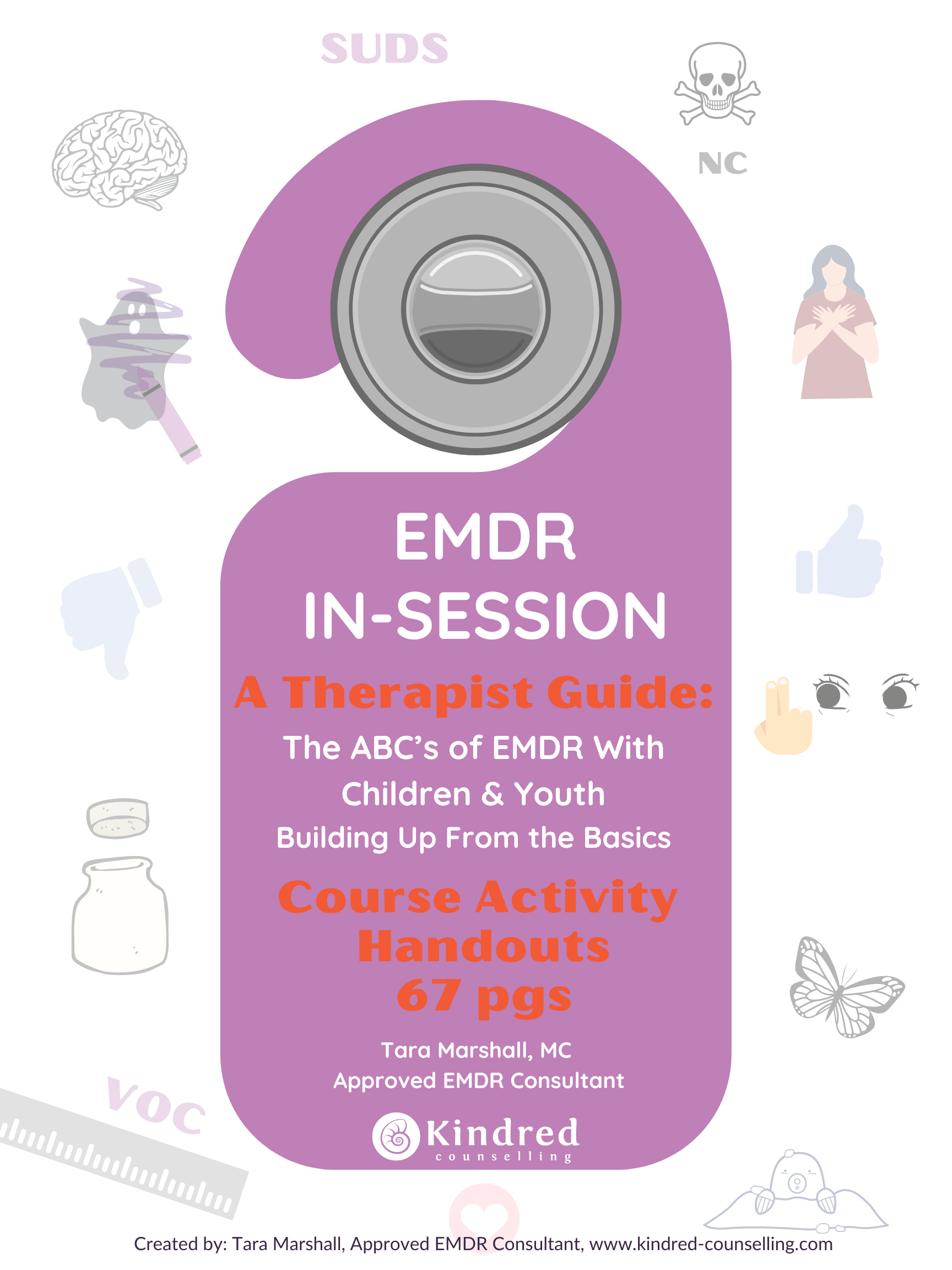
The Course
Note: This is not an EMDR Basic Training. You must have completed EMDR Basic Training to receive CEU's.
This course emphasizes the importance of EMDR therapists who work with children and youth building a strong foundational knowledge of the framework and theoretical underpinnings of the Standard EMDR Protocol as a place to build advanced skills from.
This course shares modifications that can be made when working with children and youth in all 8 phases and three-prongs of EMDR.
Therapists will leave the course with several practical resources and worksheet downloads for each phase that stick to the fidelity of the protocol but include the creative ways to achieve phase goals.
This course has a nice balance of EMDR theory and creative content, including a demo and shared experiential clinical knowledge to help the therapist feel confident that the course will bring value to their future clinical practice.
What you will learn
1. Access and refer to EMDRIA policies, procedures, and research via EMDRIA website to build their foundational understanding of EMDR.
2. Understand that modifications that are made for children and youth in EMDR protocol must still achieve the end goal of the standard protocol phase objectives.
3. Understand that foundational developmental theory of children and youth is essential to know in order to effectively work with this special population.
4. Identify multiple areas in the 8 phases of EMDR where modifications need to-or can be made to facilitate EMDR with children more effectively.
5. Understand the importance of their own personal and professional development as an influential factor that contributes to the therapeutic success of their child and youth clients.
6. Understand how to strategically prepare for EMDR sessions with children and youth.
7. Apply Phase 1: History Taking and Case Planning modifications and know areas to consider when working with minors in this phase.
8. Facilitate five original Phase 2: Preparation therapeutic activities in future EMDR sessions.
9. Introduce and explain multiple aspects of bilateral stimulation (BLS) to children and youth starting with its application in Phase 2: Preparation.
10. Gain a deeper understanding of the clinical research regarding BLS.
11. Assess what Phase 2: Preparation activities to chose to build specific assets within the child and to teach specific self-regulation skills.
12. Understand and facilitate activities and tasks of Phase 3: Assessment, Phase 4: Desensitization, Phase 5: Installation, EMDR Prong 3: Future Template, Phase 6: Body Scan, Phase 7: Closing, Phase 8: Re-evaluation when working with children and youth.
Curriculum
- Phase 1: History Taking & Case Planning Video (34:31)
- Phase 1: History Taking & Case Planning: "Get on the Same Page" Tara's Presentation Notes
- Why Am I Going to Therapy & What's Going to Happen?
- Confidentiality Child
- Confidentiality Teen
- Timeline of Upsetting Stuff: Child
- Timeline: Bright Times Dark Times: Teen
- All About Me! Child
- All About Me! Teen
- Parent Feedback Form
- EMDR Phase 3: Assessment Video (25:50)
- EMDR Phase 3: Assessment Tough Times Transition From Phase 2 -3
- EMDR Phase 3: Assessment Target & Worst Part Draw
- EMDR Phase 3: Assessment Therapist Tracking Page
- EMDR Phase 3: Assessment Identify Negative Belief
- EMDR Phase 3: Assessment Identify Emotion
- EMDR Phase 3: Assessment Identify Body Sensations
- EMDR Phase 3: SUDS Explanation
- EMDR Phase 4: Desensitization Video (24:16)
- EMDR Phase 4 Desensitization BLS/EMDR Explanation to Child and Basic Script
- The Damagers Protection Team Activity
- EMDR Prong 1: Touchstone Memory Video (5:52)
- EMDR Prong 1: Touchstone Memory
- EMDR General BLS: Busy Beaver Video (0:37)
- EMDR General BLS: Busy Beaver
- Pre-EMDR "The Damagers" Demo Read Slides
- Pre EMDR "The Damagers" Demo Watch (2:12)
- EMDR "The Damagers" Demo Video (20:23)
- Post EMDR "The Damagers" Demo Read Slides
